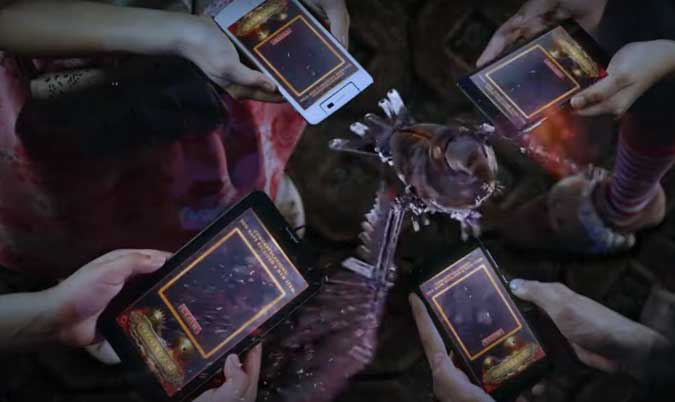By Zsarlene B. Chua, Senior Reporter
MOVIE REVIEW
Magikland
Directed by Christian Acuna
CHRISTIAN ACUNA may have helmed Magikland, but for all intents and purposes, the fantasy-adventure film was a Peque Gallaga and Lore Reyes film, harkening back to more than two decades ago when Magic Temple premiered at the Metro Manila Film Festival in 1996, winning 14 of the festival’s prizes.
Magikland, while a tribute to the cinematic career of Peque Gallaga (fondly called by some the “Steven Spielberg of the Philippines” for his ambitious works) is also a look at what the Filipino industry is capable of: that with enough time and a big enough budget, it is possible for a film to almost completely be done with great computer-generated imagery (CGI).
Mr. Gallaga passed away in May of this year.
During a press conference for the Metro Manila Film Festival in November, Mr. Acuna and Mr. Reyes (who, along with Mr. Gallaga and Albee Benitez, served as the film’s executive producers) noted that the film is “95% CG” and that it took about three years to complete — post-production alone took two years said Mr. Acuna. The budget for the film also went beyond P100 million.
And it’s easy to see why. This is the best-looking made-in-the-Philippines CGI film I have seen — the movements of the dragons (there are two) were smooth and the detailing for the world of Magikland was beautiful.
It is such a pity that the film cannot be shown in theaters this year as it clearly was meant for a bigger screen than my smartphone.
Inspiration was clearly taken from fantasy series and film franchises like Lord of the Rings and Game of Thrones (the title scene of Magikland is especially reminiscent of the HBO series based on George R. R. Martin’s books). The film’s main villain is called Mogrodo-or (played by Jamir Zabarte) — in the Lord of the Rings, Mordor is the base of the main villain Sauron, though interestingly, Mogrodo-or’s styling is very similar to Grima Wormtongue, the slimy spy of the evil wizard Saruman.
But while I have nothing but praise for the film’s production design and special effects, it has its shortcomings, mainly its actors, and, in part, the story itself.
It’s a very simple story: four children are summoned to Magikland to help save that world from the clutches of Mogrodo-or who wants to sow discord and chaos. Each of the children has their own issues: Boy Bakunawa (played by Miggs Cuaderno) has a dying mother and an unsympathetic family; two sisters Mara Marapara (Elijah Alejo) and Pat Patag (Princess Rabara) have had their lives torn apart by the acrimonious separation of their parents; and Kit Kanlaon (Josh Eugenio) lives on the streets. Each of these issues are brought forward in the first few minutes of the story. After the children earned high scores on the video game Magikland, the four are summoned to the in-game world to actually save it. The bulk of the film focuses on the trials the four children undergo as they try to obtain powers and attempt to reconcile their issues in the real world.
But while the story is simple and uses much of “the savior of the world also has issues” trope, the child actors sadly, didn’t deliver. It was a lot of stilted dialogue and the most emotional scenes felt emotionless. Not even the presence of award-winning actors such as Jaclyn Jose (as Boy’s mother) and Bibeth Orteza (as the summoner and the children’s guide) was able to make the emotional scenes effective.
It should be worth noting that none of the leads of Magikland were nominated for Best Child Performer in the Metro Manila Film Festival Awards.
Acting issues aside, Magikland is worth a watch if only to see how a Filipino was able to finally create a beautiful CGI world and film.
And do stick around after the end-credits because there is a very poignant tribute to Mr. Gallaga that I think is, ironically, the most emotional scene of the entire film.

